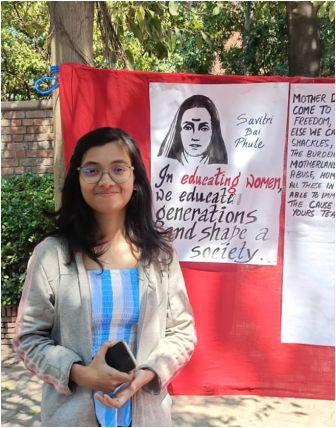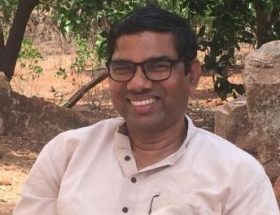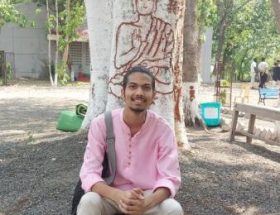Manjiri Dhiraj Sakharkar
In the case of the State of Punjab vs Davinder Singh. A seven-judge constitution bench of the Supreme Court reserved the judgment. The 6:1 ruling bench, headed by Chief Justice D.Y. Chandrachud permitted states to create sub classifications of scheduled caste and schedule tribes, by which only those who are actually in need and are underprivileged can gain benefits, and those who are capable and financially independent will be prohibited from making benefits out of reservation. This recent judgment on the subcategorization of SCs and STs has raised many questions in our minds. Along with this it has also made visible the general notion about the true meaning and understanding of people regarding ‘Reservations’ in India.
Reservations are commonly called as the measures of affirmative actions framed for the upliftment of the socially disadvantaged sections of the society. Here the word ‘socially disadvantaged’ is important to be noted. When we look at the recent Supreme court verdict it states that subcategorization is possible within the SC and ST communities to grant separate quotas for more backwards within the scheduled caste and scheduled tribes. It stated that states have the right to subcategorize and give preferential treatment if certain sections are not adequately represented or are backward. Now the question arises what are the parameters which are going to decide about the backwardness of a community? And are these the same parameters which were considered as basis for providing reservations?
In the judgment it was mentioned by the judges that it’s time to give a chance to gain benefit to the most backward sections within the scheduled caste and scheduled tribe community. The benefits which are talked about are basically material and economic. Better opportunities of jobs and education has led to the economic upliftment of a few castes, but what about the social upliftment? Do members of these communities receive the same respect and value from society as members of other communities? Why did the judges fail to consider the broader criteria of social equality when they talked about the benefits of reservation? Some groups merely improved economic standing does not excuse them from using reservation advantages.
The reservations aimed for the equal representation of the socially marginalized communities. But when it comes to representation what does the data say? With respect to their population the people of SC and ST communities are not adequately represented. Whether in higher educational institutions or politics conditions have not changed much. The Socio Economic and Caste Census of 2011 revealed that just 4% of rural Scheduled Tribe and Scheduled Caste households have a person employed in a government job. While it is a general observation that even if you get selected for higher positions, caste doesn’t leave you alone, it follows you there also. It has also been witnessed by people that more discrimination is experienced at higher positions. Further there is no adequate data which shows the real situation of backwardness and betterment of the Schedule caste community.
One of the primary goals of the constituent assembly while making the provision of reservation was to end the stigma of untouchability. Can the so-called benefits enjoyed by some sections remove the stigma that still exists in society’s mind? The answer is ‘No’. Even if the people from the depressed class acquire jobs, the stigma and prejudices remain the same. People consider them untouchable, unclean and incapable. For example, Tina Dabi who topped the UPSC civil services examination in 2016 belongs to the scheduled caste community, and because of this her merit was overlooked and she was merely seen as an aspirant who has topped the exam because of relaxations based on her caste. Today also Dalit students in higher educational institutions are facing discrimination and exclusion. They are socially neglected and considered non meritorious, and therefore the stigma continues.
Many decision making posts are kept away from the people of backward communities, they are socially excluded to acquire such posts and therefore it is not correct to say that some classes have got the benefits of reservation. As stated by justice Bela Trivedi , “Adequate representation meant qualitative representation and not just numerical representation.” Even many times the job profile acquired by these people doesn’t come with dignity. Dalits generally work in low-profile jobs, which tend to be low-paying jobs. For example most of the Manual scavengers belong to the marginalized section of society. Therefore, merely getting a job is not the real upliftment and you can not say that the benefits of reservation are received. Socially it’s still a long way to go.
The scheduled class and scheduled tribe community is already a community formed on the basis of their social and educational backwardness, classifying this community on the basis of economic backwardness will totally nullify the effort of listing this group for their social upliftment. And if one tries to examine this community on the basis of their social backwardness, then all the people from the community stand on the same line, which questions the logic behind the subclassification. Comparing economic wellness with the forwardness of the particular group is wrong, forwardness in real terms will be achieved when all the three social, educational and political upliftment is achieved. Here, we are clearly lagging in achieving social equality. Same is supported by Dr. B.R Ambedkar who said that we must make our political democracy a social democracy as well. Here, social democracy means a way of life which recognises liberty,equality and fraternity as the principle of life.
In the judgment one of the judges stated that “Reservations must be restricted to the first generation of the family”, if same is done reservations will definitely provide the first generation an equal chance for development but what about the other generations, will the historical differences which were faced by people of these community vanish after the first generation gets benefits of reservation? And what about the social stigma attached to people of these castes?
Justice Gawai stated that some castes have reached a stage where they should walk out from taking the benefits of reservation and give chance to the more needy. Which stage is he talking about, is economic upliftment alone enough for people to lead dignified lives? Is it right to exclude people from the benefits of reservation once they have reached a certain economic stage? Why is social betterment and social equality of all is not considered as the criteria for achieving this stage? Even if we consider that some people have reached the stage by taking benefits of reservation, the mentality of the society hasn’t changed. Atrocities and violence are still prevalent, social stigma is still there which acts as an obstruction to reach that stage which justice Gawai mentioned. And the economic stage reached is of no use when it can not assure you social dignity and make you feel excluded.
The actual rationale behind the reservation was the social upliftment and social acceptance of people who were considered untouchable and unclean. The Constitution through various provisions supports affirmative action, whose ultimate aim is to achieve social equality and social upliftment. In the constituent assembly debates the rationale for reservation discussed was to gain proper representation and a proper voice in the administration of the country. The stigma of untouchability had led to division of laborers resulting in the socio, economic, and political and educational disadvantage to these sections of population. Therefore, Dr.BR Ambedkar said that “Caste System is not merely a division of labour. It is also a division of labourers.” The assembly’s final decision was to provide reservations on the basis of the social disadvantage of caste. It was clear that only structural disadvantages experienced by communities due to any social, educational and economic discrimination cumulatively would be resolved by the constitutional provisions like reservations.
Subclassification has merely focused on the economic side of the upliftment and the social aspect is sidelined. Therefore, it is necessary to reevaluate the judges’ limited perspective on the criteria for upliftment of SC and ST community. But there are many other things also to be considered, for example the discriminations faced by the people of scheduled caste communities as a whole are similar, even if some are uplifted the discrimination continues and their social status remains the same. The economic upliftment of few is just very minor and it needs proper data to say that the true benefits are taken by them. While economic upliftment can be accomplished quickly and readily, social upliftment is more difficult to attain and takes longer to complete. In terms of representation, social justice, equality of status, dignified treatment and other aspects, the scheduled caste community is falling behind. Discriminations and violence against the SCs and the STs are still prevalent in the society. The entire community still faces social stigma and exclusion, even though some people have managed to achieve economic prosperity.
Therefore the social upliftment of a community, which was the main basis for affirmative action, is still to be achieved. There is a need to look at sub categorisation and its rationality by keeping in mind the social aspect. To achieve the ideal of equality in a real sense it is important to consider aspects of social equality.
~~~
Manjiri Dhiraj Sakharkar is currently working as a researcher at the Centre for the Study of Developing Societies. I recently completed my Masters in Political Science from University of Delhi, New Delhi. I am an enthusiastic learner who always aspires to bring some change in society and has a keen interest in researching in the areas of Democracy, Constitutionalism, Social justice and Human Rights etc. I love writing about everyday life experiences and emerging issues of society.










